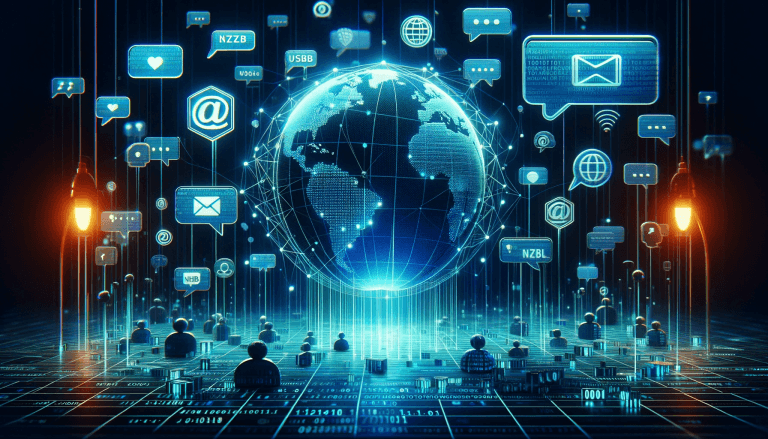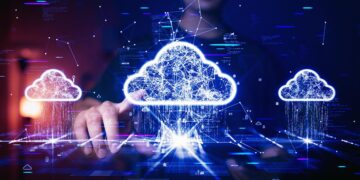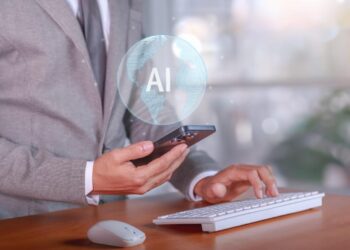The internet, as we know it—a flat, two-dimensional experience consumed primarily through screens and browsers—is rapidly approaching its next evolutionary stage. This transition is leading humanity into the Metaverse: a persistent, shared, virtual 3D space where physical and digital realities converge. More than just a simple virtual reality (VR) game or an advanced social media platform, the Metaverse represents a radical shift in human interaction, commerce, work, and entertainment. It is a continuous, interoperable network of virtual worlds and experiences that will eventually mirror, augment, and transcend the limitations of our physical existence. Metaverse: The Next Digital Frontier is an extremely high-value topic, highly desirable for publishers aiming for high CPC (Cost Per Click) revenue through search terms related to technology investment, blockchain, gaming, and digital commerce.
This expansive digital realm is built upon a complex foundation of cutting-edge technologies, including blockchain for digital ownership, high-fidelity graphics (AR/VR/MR), advanced networking (5G/6G), and sophisticated AI. The economic implications are staggering; analysts project the Metaverse will generate trillions of dollars in value as businesses migrate commerce, training, and brand experiences into these virtual spaces. Success in this new frontier requires understanding the underlying technologies, the emerging business models, and the critical societal and ethical challenges related to identity, security, and digital ownership. This analysis provides an exhaustive look into the mechanisms and the immense strategic opportunities presented by this new digital ecosystem.
A. Defining the Core Pillars of the Metaverse
The Metaverse is not owned by a single company, nor is it a singular product. It is a convergence of multiple technologies and fundamental principles that create a unified digital experience.
A. Persistence and Synchronicity: Unlike a standard video game that ends or resets, the Metaverse continues to exist and operate in real-time, regardless of whether any single user is logged in. Changes made by users are permanent:
A. Live Experiences: All users experience the same events at the same time, facilitating live concerts, real-time business meetings, and simultaneous global gatherings.
B. Interoperability and Open Standards: A true Metaverse requires seamless movement between different virtual environments, bringing digital assets (e.g., clothing, vehicles, tools) with the user:
A. Asset Transferability: The ability to use a non-fungible token (NFT) item purchased in one game or platform within a completely different environment (e.g., using a virtual car bought in “World A” in “World B”).
C. Decentralization and Digital Ownership: Built on blockchain technology, decentralization ensures that ownership of digital assets, identity, and governance rests with the users, not a central corporation
A. Non-Fungible Tokens (NFTs): NFTs are the legal deeds and proof of ownership for digital land, avatars, artwork, and collectibles, enabling a verifiable digital economy
B. Decentralized Autonomous Organizations (DAOs): Governing structures that allow asset holders to vote on the rules, development, and future direction of decentralized Metaverse platforms.
B. Technological Stack Driving the Immersive Experience
The seamless, high-fidelity experience of the Metaverse is dependent upon the maturation and integration of several complex and evolving technologies.
A. Spatial Computing (AR/VR/MR): The hardware interface that enables immersion:
A. Virtual Reality (VR): Fully immersive digital environments, accessed via headsets (e.g., Meta Quest, Pico), that completely block out the physical world.
B. Augmented Reality (AR): Overlaying digital information onto the physical world via smartphone screens or specialized glasses (e.g., smart glasses), maintaining a link to reality.
C. Mixed Reality (MR): Advanced forms that allow digital and physical objects to interact and coexist dynamically in real-time.
B. Advanced Networking (5G/6G and Edge Computing): High-speed, low-latency connectivity is critical for real-time interaction in densely populated virtual worlds:
A. Latency Reduction: Low latency (achieved via 5G/6G) is essential to prevent motion sickness in VR and ensure instantaneous interaction between users and the environment.
B. Edge Processing: Utilizing localized computing power at the “edge” of the network to process real-time environmental data (like body tracking and facial expressions), reducing the burden on central servers.
C. AI and Generative Models: Artificial Intelligence is responsible for populating, optimizing, and animating the Metaverse.
A. Virtual Companions and NPCs: AI creates realistic, responsive Non-Player Characters (NPCs) and synthetic users to fill virtual spaces, making them feel alive and dynamic.
B. Generative World Creation: Using Generative AI to instantly create vast virtual landscapes, architectural structures, and unique textures based on natural language prompts, dramatically accelerating content creation.
D. Blockchain and Web3 Infrastructure: Provides the foundational ledger for digital ownership and currency.
A. Cryptocurrencies: Used as the native transactional medium (e.g., Ethereum, Solana, and platform-specific tokens) within the virtual economy.
B. Self-Sovereign Identity (SSI): Emerging protocols that allow users to control their digital identity, credentials, and reputation across various virtual worlds without relying on a central login provider.

C. Economic Transformation: New Business Models
The Metaverse is creating entirely new revenue streams and fundamentally altering established industry practices, particularly in commerce, advertising, and labor.
A. Digital Real Estate and Asset Flipping: Virtual land and key digital assets become investment vehicles, driven by scarcity (controlled by the blockchain):
A. Metaverse REITs: Decentralized investment funds specializing in acquiring, developing, and renting virtual land parcels for commercial use, often yielding high returns.
B. Avatar Economy: The multi-billion-dollar market for digital clothing, accessories, and customization features for avatars, often sold as high-fashion NFTs.
B. Immersive Commerce (iCommerce): Transforming online shopping into a social, sensory experience:
A. Virtual Try-Ons: Using AR to allow customers to virtually try on clothing, jewelry, or makeup before making a physical or digital purchase, reducing returns and increasing conversion confidence.
B. Brand Activations and Virtual Showrooms: Companies creating persistent, branded virtual spaces (showrooms) to host events, launch products, and engage customers in a highly interactive way, often selling both the digital and physical versions of the product.
C. Labor and Productivity: Shifting from physical offices to permanent, virtual collaborative spaces.
A. Virtual Workspaces: Using VR/MR environments for remote teamwork, spatial data visualization, and realistic collaborative design sessions, eliminating geographical barriers.
B. Digital Manufacturing and Training: Utilizing Metaverse environments to run high-fidelity simulations for complex procedures (e.g., surgery, equipment repair, disaster response), reducing risk and increasing training efficiency.
D. Societal Challenges and Ethical Governance
The boundless nature of the Metaverse necessitates immediate attention to critical ethical, legal, and psychological challenges to ensure safe and equitable development.
A. Digital Identity and Security: The blending of physical and digital identities raises new security and privacy risks:
A. Biometric Data Exposure: VR/AR headsets collect intimate biometric data (eye movement, pupil dilation, physical gestures) that can be used to infer emotional states, requiring strict data minimization and encryption protocols.
B. Identity Theft and Phishing: The increased value and complexity of digital assets make users highly vulnerable to sophisticated identity theft and targeted cyberattacks within the virtual world.
B. Governance and Jurisdiction: Determining who enforces laws and ethical standards in a decentralized, borderless virtual space:
A. Content Moderation: Establishing standards for acceptable behavior, harassment, and hate speech in immersive 3D environments, which are often more intense and psychologically impactful than 2D platforms.
B. Taxation and IP Rights: Developing new international legal frameworks to manage taxation of assets and transactions in the borderless Metaverse, and protecting intellectual property rights for digital creators.
C. Psychological and Health Impact: E. Addiction and Withdrawal: The highly immersive nature of VR/Metaverse environments poses risks of psychological dependency and social withdrawal from the physical world:
A. Digital Exclusion: The cost and requirement for advanced hardware (headsets, powerful PCs) risk creating a significant digital divide, excluding low-income populations from the economic and educational opportunities of the Metaverse.
E. Strategic Investment and Future Trajectory
The Metaverse represents a long-term investment cycle requiring strategic planning and focus on fundamental interoperability standards.
A. Investment Focus: Enabling Infrastructure: Early investment is focused on the foundational layers that will enable the ecosystem:
A. Chip Manufacturing: Investing in specialized processors (GPUs and custom ASICs) designed for simultaneous high-resolution rendering, AI processing, and low-latency networking.
B. Developer Tools: Funding the creation of accessible software development kits (SDKs) and low-code/no-code platforms to allow millions of creators to build content, rather than relying on a few large studios.
B. Measuring Metaverse ROI: Traditional digital marketing metrics must evolve to quantify value in a spatial, immersive context:
A. Spatial Analytics: Tracking user movement, gaze direction, interaction with virtual objects, and emotional responses within the 3D environment to measure engagement and advertising effectiveness.
B. Token Utility: Evaluating the success of decentralized platforms not just by transaction volume, but by the tangible utility and governance participation offered by the native cryptocurrency or NFT.
C. The Next Five Years: Interoperable Evolution: The trajectory is moving from isolated virtual environments toward true interoperability.
A. Standardized Identity Protocols: The development and widespread adoption of open standards (like Web3/SSI) that allow a single, unified avatar and identity to travel seamlessly between different company-owned and decentralized Metaverses.
B. Real-World Blending: The increasing penetration of AR/MR glasses will make the Metaverse less about escaping reality and more about augmenting it, embedding digital information and commerce into our everyday physical environments.
Conclusion
In conclusion, the Metaverse is more than a fleeting technological buzzword; it is the inevitable evolution of the internet—a persistent, decentralized, and immersive reality that will fundamentally change how we work, socialize, and transact. While the challenges of governance, security, and ethics are significant, the economic opportunities presented by mass personalization, digital ownership, and borderless commerce are too immense to ignore. The businesses that lead the way in building interoperable, ethical, and high-fidelity experiences will be the ones to define the next digital frontier.








